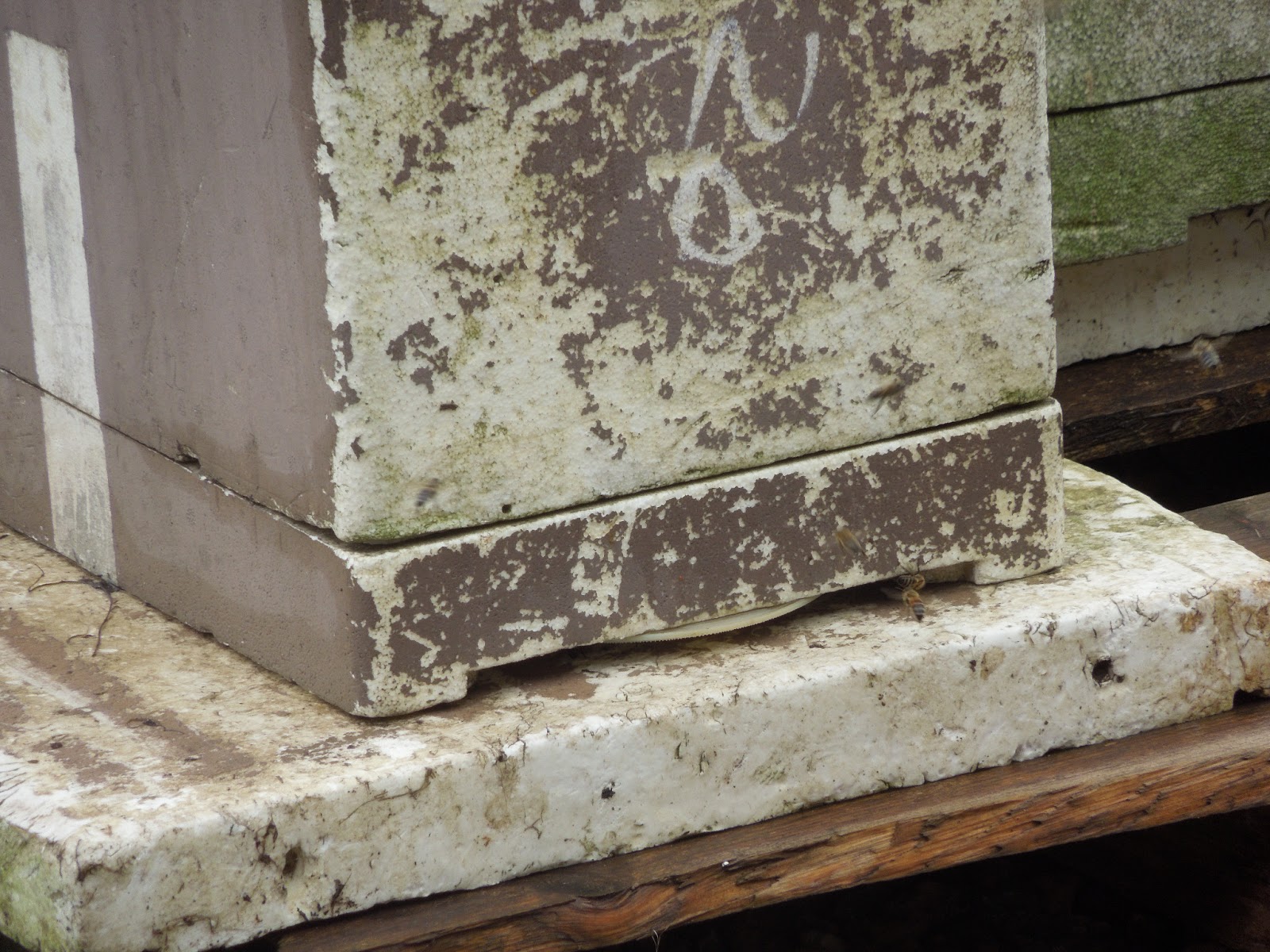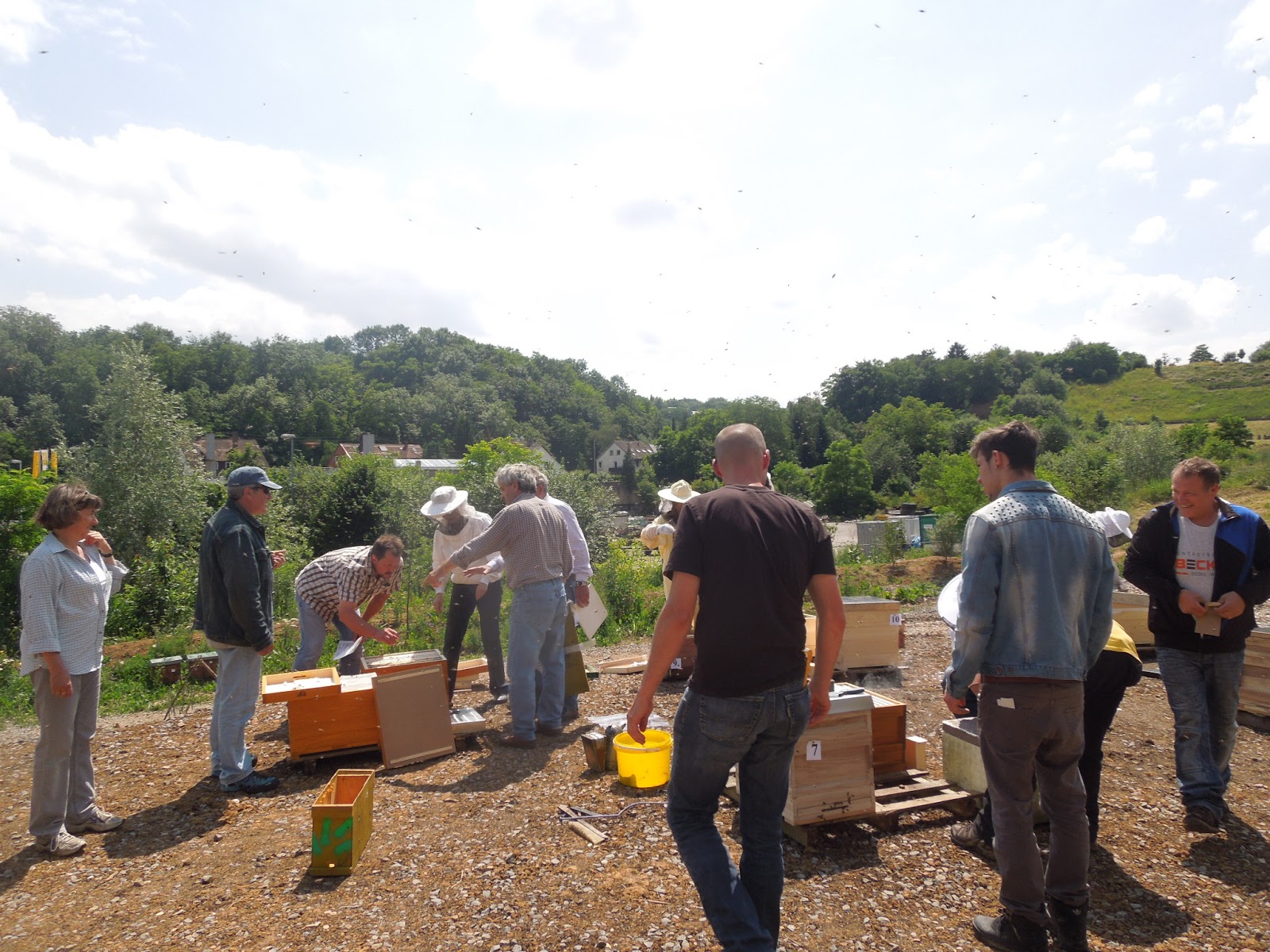When we took over our colony on Sunday, the breeder told us, that after some time we had to insert an empty section, so the bees had the possibility to continue building.
We opened the bee hive from above and controlled. The girls have been quite busy and there was some wax on the outside of the wooden frame. We scrape that away. Now we don't know if they will reuse it again. So we put it near the bee hive. If they want to do so, they can.
By the way, the girls are really peaceful. Until now we haven't yet used the smoker or the
bee keeper uniform. The "guardian" is still at the entrance. We don't know yet if he is here for protection or guidance.
Right now I continue to learn about the behavior of the bees. So I downloaded a book at
Audible Audiobooks
aka "The bee; superorganism honey bee"
It is very interesting. Among many other things he narrates about the dance of the bees and its significance for other bees where to find their food. Then he talks about the sense of distance with bees. So monotonous distances like wheat fileds seem shorter to them than distances with changing vegetation. Water seems to be a non-distance to them. For proving this, scientists have gone as far as Australia in order to find a like without any people on it - which in summer in Germany isn't possible.
Then there is abundant information on the internet. In the beginning, there are still some
words which have to bee known and understood:
What is the difference between pollen and nectar? Look here.
What is propolis?
What is the phenomenon of swarming and how does it happen?
I like to have a look at other blogs from bee keepers which have to teach a lot.
Have a look at Linda's blog, here she give's advice about swarms and what you need to know
This is a blog from England.
I like this blog from Philadelphia, very lively with many pictures.













































